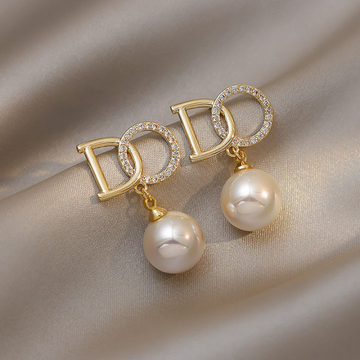Navigating Purchase Channels and Ensuring Quality for Stone Bracelets
Selecting a stone bracelet involves more than aesthetics—it requires careful consideration of where to buy and how to verify authenticity. With diverse purchasing options available, understanding the strengths and risks of each channel, alongside quality assurance strategies, is essential for a satisfying acquisition. Below, we explore trusted avenues for purchase and measures to safeguard against counterfeits or subpar craftsmanship.
Exploring Reputable Physical Retail Environments
Physical stores offer tactile experiences and immediate expertise, making them a popular choice for stone jewelry buyers:
- Specialized Boutiques and Galleries: Establishments focusing on gemstones or artisanal jewelry often employ knowledgeable staff who can explain stone origins, treatments, and ethical sourcing. These venues may also collaborate with certified gemologists to authenticate pieces.
- Cultural and Heritage Markets: Markets specializing in regional crafts, such as those in Southeast Asia or Latin America, feature vendors selling traditional stone bracelets. While bargaining is common, buyers should prioritize sellers with established reputations or positive customer reviews to mitigate risks.
- Auction Houses and Estate Sales: For vintage or antique pieces, auction houses provide access to curated collections with documented provenance. Estate sales, particularly those hosted by reputable firms, may also offer unique stone bracelets with verifiable histories.
Leveraging Online Platforms with Verification Protocols
The digital marketplace expands access to global sellers but demands vigilance to ensure quality and authenticity:
- E-Commerce Jewelry Retailers: Established online platforms with stringent vendor vetting processes, such as those requiring gemological certifications, offer a safer environment for purchasing stone bracelets. Look for sellers with transparent return policies and detailed product descriptions.
- Artisan Marketplaces: Websites connecting buyers directly with independent jewelers often highlight craftsmanship and material sourcing. Prioritize sellers with high ratings, customer testimonials, and clear communication about stone treatments or repairs.
- Social Media and Direct-to-Consumer Channels: Many jewelers now sell through Instagram, Etsy, or personalized websites. While this approach fosters direct interaction, buyers should request additional documentation (e.g., gemological reports, videos of the piece) and verify the seller’s credibility through reviews or references.
Implementing Quality Assurance and Authentication Measures
Regardless of the purchase channel, proactive steps can help buyers confirm a stone bracelet’s legitimacy and craftsmanship:
- Gemological Certification: Insist on certificates from reputable labs, such as GIA, SSEF, or AGL, which verify stone type, origin, and treatment history. For example, a certificate confirming a jade bracelet’s natural origin can prevent misrepresentation.
- Third-Party Appraisals: Independent appraisers not affiliated with the seller can provide unbiased assessments of a bracelet’s value, material quality, and structural integrity. This service is particularly valuable for high-value or vintage pieces.
- Return and Warranty Policies: Reputable sellers offer generous return windows (e.g., 30 days) and warranties covering defects or undisclosed repairs. Review these terms carefully before purchasing to ensure recourse if the piece does not meet expectations.
Engaging with Community and Expert Resources
Tapping into collective knowledge and professional guidance can strengthen purchasing decisions:
- Jewelry Forums and Online Communities: Platforms like Reddit’s r/jewelry or specialized forums allow buyers to ask questions, share experiences, and crowdsource recommendations. Members often highlight trustworthy sellers or warn against fraudulent practices.
- Consulting Gemologists and Appraisers: For complex purchases, hiring a professional gemologist to inspect a bracelet in person or via high-resolution imagery can provide peace of mind. Their expertise in identifying treatments, inclusions, or synthetic stones is invaluable.
- Attending Jewelry Trade Shows and Events: Industry expos or gem fairs enable buyers to examine stones up close, compare vendors, and network with experts. These events often feature educational sessions on spotting fakes or evaluating craftsmanship.
Prioritizing Ethical and Sustainable Sourcing Practices
In an era of conscious consumption, ensuring a stone bracelet aligns with ethical standards is increasingly important:
- Conflict-Free and Ethical Certifications: Look for sellers adhering to initiatives like the Kimberley Process (for diamonds) or Fairmined gold standards. Certifications from organizations like the Responsible Jewellery Council validate sustainable practices.
- Transparency in Supply Chains: Sellers who disclose stone origins, mining methods, and labor conditions empower buyers to make informed choices. For example, knowing a bracelet’s jade was sourced from a small-scale, eco-friendly mine may influence the decision.
- Recycling and Upcycling Options: Some jewelers specialize in repurposing vintage stones or metals, reducing environmental impact. Choosing such pieces supports circular fashion while offering unique designs.
By combining thorough research, verification protocols, and ethical considerations, buyers can confidently navigate the market for stone bracelets. Whether purchasing from a physical boutique or an online artisan, prioritizing quality, authenticity, and sustainability ensures a meaningful and enduring acquisition.







